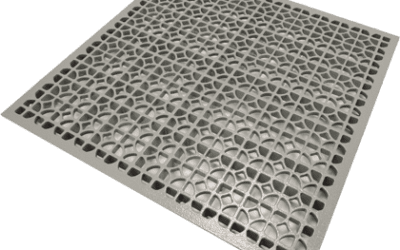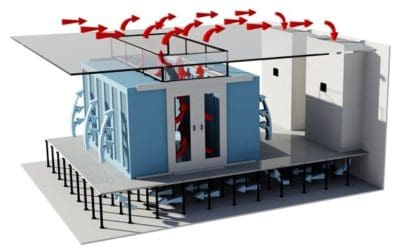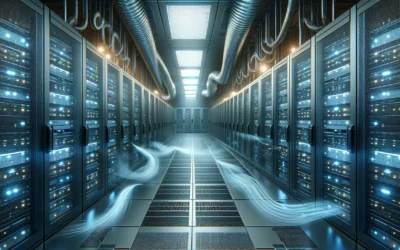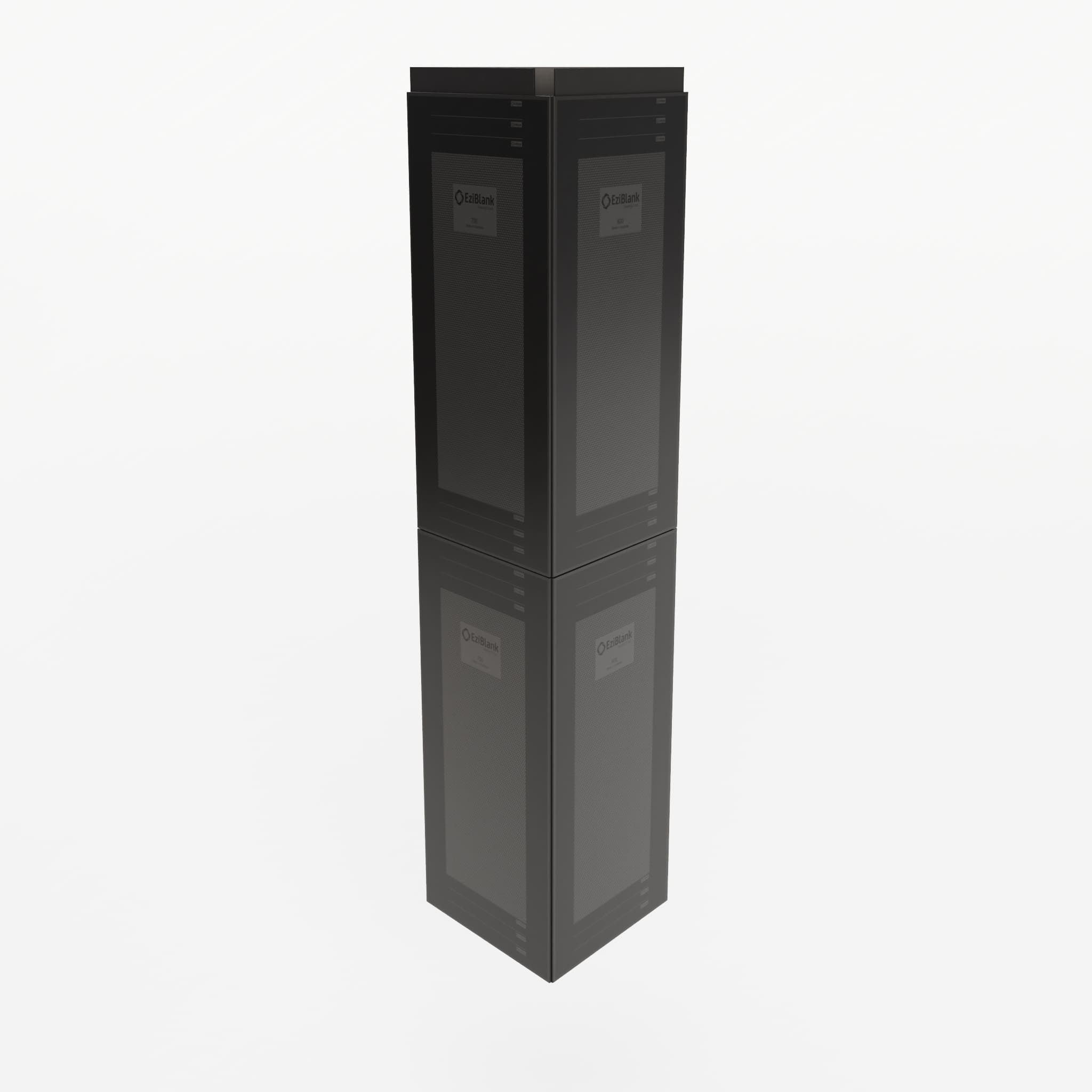Data centers do emit electromagnetic radiation, but only in the form of low-level, non-ionizing electromagnetic fields (EMFs). This includes common types of emissions such as infrared heat, radiofrequency signals from certain wireless equipment, and visible light from operational indicators. These radiation types are part of standard electronic operations and remain well within globally accepted safety levels.
While some concerns exist about the long-term effects of EMF exposure, current evidence shows that the levels found in or around data centers do not pose a health risk to employees or nearby residents. The radiation is confined to internal equipment zones and does not extend beyond the facility in harmful concentrations.
In this guide, we’ll explore where this radiation comes from, how it compares to everyday electronics, what’s myth vs fact, and how airflow and layout play a more important role in data center safety than radiation itself.
Do Data Centers Emit Radiation?
Yes, data centers emit low levels of electromagnetic radiation. However, it’s essential to recognize that the type of radiation they produce is classified as non-ionizing electromagnetic radiation, which differs from the harmful radiation most people associate with the term. This includes things like radio waves, infrared heat, and visible light, the same types of emissions that come from Wi-Fi routers, monitors, and household electronics.
Radiation in a data center environment is simply a byproduct of electrical equipment operating at high capacity. It’s not unusual, and it’s not dangerous at standard exposure levels.
What Kind of Radiation Comes from a Data Center?
Non-ionizing electromagnetic fields (EMFs) are the main type of radiation found in data centers. These come from a variety of equipment types that run continuously to support digital infrastructure:
- Servers and networking gear emit heat (infrared radiation) and small levels of electromagnetic energy.
- Power supply units generate localized electric and magnetic fields as current flows through them.
- Indicators, control panels, and signal lights emit visible light radiation.
- Some wireless signal transmission equipment may also emit radio frequency (RF) signals in specific zones.
Electronics naturally emit this type of radiation and don’t carry enough energy to damage DNA or cellular structures, which is the real concern with ionizing radiation like X-rays or gamma rays. That type has no place in a standard data center.
Is Data Center Radiation Harmful to Humans?
According to multiple technical studies and international safety guidelines, the non-ionizing EMFs found in and around data centers are not considered harmful at the levels typically encountered during operation.
In practice, the radiation exposure from being inside a data center, even for long working hours, is no different from being in an office full of desktop computers and networking switches. For those working in server rooms, the key is airflow, temperature regulation, and equipment layout, all of which affect comfort and efficiency, not exposure risk.
Our team has already explained how poor airflow can cause real discomfort and cost implications. Radiation, on the other hand, remains a minimal concern when data centers are properly managed.
What About Living Near a Data Center?
This is one of the most commonly asked questions we see. People want to know if having a large data facility in the neighborhood poses any kind of health threat.
The reality is: radiation from data centers doesn’t extend far beyond their physical walls. These buildings are built with electrical shielding and heavy infrastructure that naturally contain any EMFs. Most emission sources are located deep within the facility and do not reach the external environment.
Zoning regulations, local construction laws, and environmental compliance measures ensure that any data center built near residential or urban areas does not exceed safe operational thresholds. Living near one is no more harmful than living near an office building.
If you’re curious about the broader concerns of proximity, our post on Is it Dangerous to Live Near a Data Center? answers this in greater detail.
The Real Discomforts Near Data Centers (Hint: It’s Not EMFs)
While EMFs are generally misunderstood, there are more immediate environmental factors that surround large-scale IT facilities.
- Noise pollution: Fans, HVAC systems, and backup power units generate constant sound.
- Diesel generator emissions: Used during outages, they can affect local air quality if poorly managed.
- Heat dispersion: High-density servers expel a significant amount of thermal energy into the environment.
These are the kinds of issues that facility managers work to solve through airflow containment, precision cooling, and optimized layout planning. For instance, using intelligent airflow solutions like our blanking panels and floor tiles helps to control internal temperatures and prevent energy waste, with real, tangible results.
How Data Centers Minimize EMF Exposure
Even though non-ionizing radiation is considered low-risk, modern data centers are still engineered with several practices that further reduce any concern:
- Server segregation: High-power units are distributed evenly to avoid EMF concentration.
- Cable shielding: Power and signal cables are often protected to limit field dispersion.
- Air containment: Controlled airflow reduces unnecessary exposure to hot zones or electrical turbulence.
- Separation of personnel zones: Occupied spaces are physically distanced from heavy-duty racks.
This is one reason why we focus heavily on products that improve rack-level airflow management, such as brush panels that maintain cooling efficiency while preventing airflow leakage. These same practices indirectly support EMF containment by reinforcing spatial planning.
Common Myths About Radiation in Data Centers
There are several misconceptions floating around the internet about what type of radiation data centers produce. Let’s clear up a few:
Myth 1: “Data centers emit dangerous radiation like X-rays.”
False. They emit non-ionizing radiation, similar to phones or routers.
Myth 2: “Fiber optics generate radiation.”
False. Fiber uses light to transmit data and emits no harmful EMFs.
Myth 3: “Spending time near a rack will damage your health.”
False. You’re exposed to higher EMFs on a train or near a microwave.
It’s important to focus on infrastructure health, not misinformation. EMFs are a normal part of digital equipment function, and current research shows no meaningful danger from exposure at common levels.
When Should EMF Exposure Be a Real Concern?
The only time EMF exposure could be worth monitoring is in poorly maintained or high-voltage environments where proper airflow, spacing, and shielding aren’t observed. Even then, it’s not the radiation itself but the operational inefficiencies that pose a risk, such as equipment overheating or poor ventilation.
That’s why it’s critical to follow data center best practices, many of which revolve around airflow zoning, cooling isolation, and temperature control, all areas where our containment solutions make a measurable difference.
Focus on What Matters
Yes, data centers emit electromagnetic fields. But they are non-ionizing, low-level, and scientifically understood to be safe at the exposure levels found in and around properly built facilities.
If you’re evaluating whether it’s safe to live near or work within a data center, the more important considerations are air quality, heat dispersion, and noise levels, not invisible fields that carry less energy than a Wi-Fi signal.
We continue to support safer, more efficient data center environments through precision airflow control, equipment-level sealing, and smart containment systems that improve performance without adding fear.





